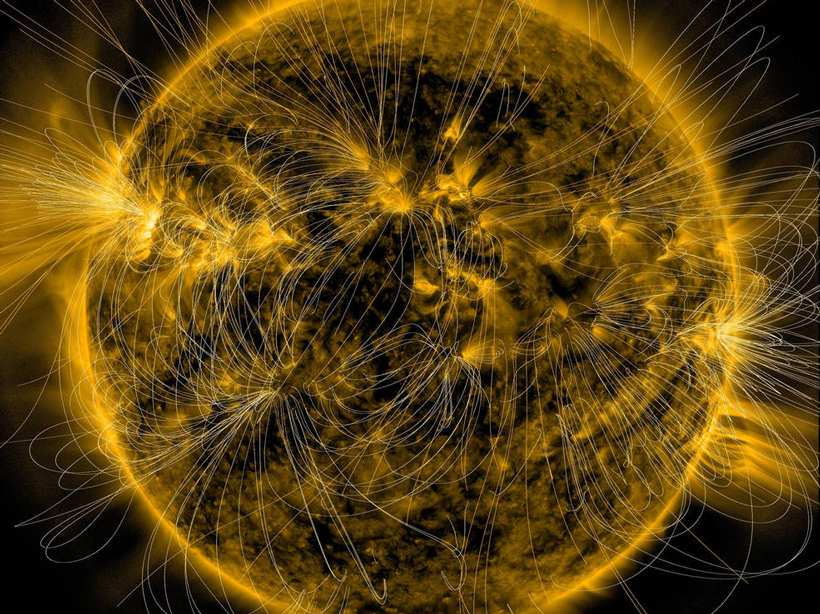Source: Journal of Geophysical Research: Space Physics
Space weather forecasting requires understanding what happens when the Earth’s magnetic field meets the Sun’s. When their field lines touch, they can suddenly link up with each other and explosively realign. Like a snapping rubber band, the field lines rebound, sparking geomagnetic storms and sending dangerous radiation toward Earth that can damage satellites and threaten power grids.
However, some conditions are more conducive to this process, called magnetic reconnection. Particularly important is the orientation of the Sun’s magnetic field. Although Earth’s magnetic field is fixed about its North and South poles, the Sun’s magnetic field is warped throughout space, and Earth may find itself in a part of the field pointing in a different direction at any given time. The best conditions for magnetic reconnection are when the Sun’s magnetic field is aligned southward, antiparallel to Earth’s.
Scientists measure the direction of the Sun’s field with satellites stationed between the Sun and Earth, like NASA’s Advanced Composition Explorer (ACE) and Deep Space Climate Observatory (DSCOVR). They warn us of approaching storms by monitoring the solar wind, the stream of charged particles thrown off by the Sun.
However, recent studies have shown that the direction of the Sun’s field can shift by the time it reaches Earth’s magnetic field, apparently twisting after passing those satellites. This could lead to inaccurate space weather forecasts.
To determine why this happens, Turc et al. analyzed archival data for 82 solar storms caused by approaching magnetic clouds ejected by the Sun. The team compared solar wind measurements with data from closer satellites orbiting in and around Earth’s magnetic field and used a model to reconstruct the conditions in between. Their work zeroed in on two factors.
The first is the bow shock that the Earth creates in the solar wind. Like a ship plowing through water, the Earth creates a shock wave in the solar wind as it flows past, which the Sun’s field lines must traverse. The team’s analysis showed that depending on their relative orientations, the shock could alter the direction of the field.
Second, after crossing the bow shock, the field lines encounter the influence of Earth’s magnetic field. They don’t simply meet it head-on, but instead drape themselves over the Earth’s bulbous field and are warped in the process.
The authors report that these two factors combine to shift the direction of the field, which could alter the probability of magnetic reconnection. In some cases, it even reversed a benign northward field into a reconnection-prone southward field and vice versa. These reversals spanned roughly 20% of the Earth-Sun magnetic field boundary and lasted over half an hour, making them significant enough to potentially throw off forecasts of geomagnetic storms.
The authors report that their models successfully reproduced the observations roughly 80% of the time. But more work must be done to improve their performance and incorporate them into real-time forecasts. (Journal of Geophysical Research: Space Physics, https://doi.org/10.1002/2016JA023654, 2017)
—Mark Zastrow, Freelance Writer
Citation:
Zastrow, M. (2017), Explaining unexpected twists in the Sun’s magnetic field, Eos, 98, https://doi.org/10.1029/2017EO071007. Published on 04 April 2017.
Text © 2017. The authors. CC BY-NC-ND 3.0
Except where otherwise noted, images are subject to copyright. Any reuse without express permission from the copyright owner is prohibited.

